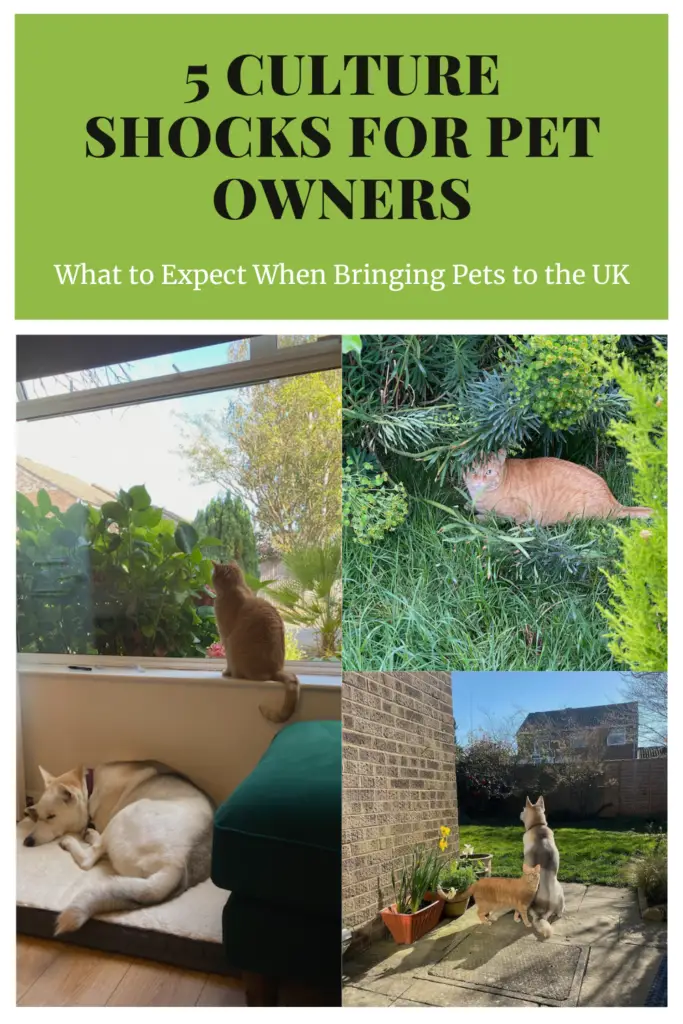You may have already considered the culture shocks you’ll experience moving from the US to the UK. But have you considered the culture shocks from bringing your pets to the UK? They may not always notice the difference, but how pets are treated here can be quite different from the US. These differences can be shocking for Americans.
This article contains affiliate links, which means that I may earn a small commission when you make a purchase. Affiliate links cost you nothing to use, and they help keep my content free – a win-win! For more information, see the affiliate disclosure.
GET READY TO MOVE TO THE UK WITH THESE TOOLS
✅ Be ready to drive on the left with Tripiamo’s comprehensive video driving guides.
✅ Future proof your finances (even if you’re in debt) with Slay the Stock Market (50% off with this link!)
✅ Save an average £167 per year on train travel with a UK Railcard
Renting with Pets
If you’re accustomed to renting with a pet in the US, then you already know to expect higher deposits and maybe even dreaded “pet rent”. In the UK, it can be exceptionally difficult to find rental housing that is accepting of pets at all. You often must reach out to estate agents whose listings are silent as to pets and plead the case for your furry friend to be allowed. In competitive markets like London renting with a pet can be even tougher.
If you’re planning to move to the UK with pets, I’d recommend setting aside additional funds to offer an increased deposit and 6-12 months’ rent up front. Reaching out to estate agents stating this ability clearly will increase your responses and ultimately your chances of finding a good rental home for you and your pets.
Read this post for more on estimating your expenses when moving to the UK.
A recently published government white paper suggests that renting with a pet may become easier soon. The white paper includes a right for tenants to request having a pet in the home and banning landlords from denying that request without a reason. This isn’t law yet, but hopefully will start shifting expectations around pets in rentals.
Dogs Allowed in Shops and Restaurants and on Trains
One of the more surprising differences I’ve run into since moving is how many businesses welcome dogs. There is no legal ban on dogs joining their owners dining in restaurants for instance. The number of shops I enter that keep a stash of dog treats on the counter is also a lot higher than I would have expected.
All businesses have the right to prohibit dogs, and some do. Your results may vary in different parts of the country as well. For some ideas of dog-friendly places to visit or eat, you can run a free search on dogfriendly.co.uk. Their database is not an exhaustive list, but a good place to get started.
If you’re looking to dine out with your pup, then try a local pub for your best bet. I’ve dined indoors at a pub with Loki enjoying a spot by the fireplace and a bowl of treats. He’s visited almost as many pubs in our area as I have and tried on a few more when we took a road trip out to Cornwall.
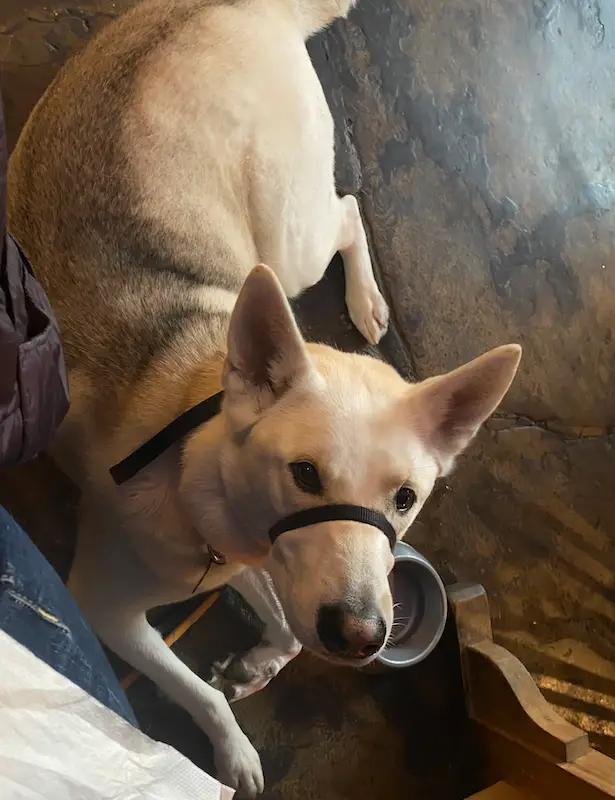
Even if you’re headed into London, your dog is welcome to accompany you on the trains and Tube. King’s Cross has a whole slew of dog friendly activities to check out. If you’re hoping to travel within the UK by train, you can also bring your dog along on the journey.
Off-leash Culture for Dogs
Another note for dog owners is the difference in off-leash (off-lead in the UK) expectations. If you’re on a busy street or near a children’s play area, then on-lead is expected. The miles of walking paths are another story. As long as you have control over your dog then they are fine to be off-lead. This means coming when called and not being a menace to other dogs and humans on the trail.
I was initially very hesitant to let Loki off-lead if there was any chance we would encounter others. He’s not a small dog and I’d hate for someone to feel intimidated by him. I’ve noticed something strange, though. When he’s on-lead on a hike, then other walkers give him more space and snag their dogs away from him. If he’s off-lead, others generally ignore him. A friend explained to me that an on-lead dog out in these areas is often assumed to be aggressive.
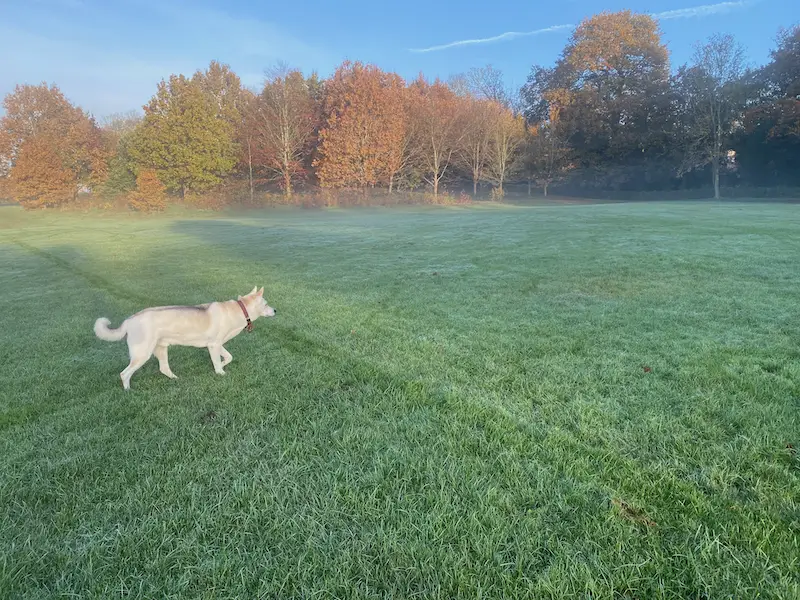

One place you’ll need to keep your dog on-lead even when on a hike is in fields shared with livestock. Grazing animals are common in some areas and typically you’ll pass a notice when entering at the gate. Worrying livestock is a serious offense carrying a £1,000 fine. Even worse, an excited dog near a cow or even some sheep could wind up seriously injured if that animal decides your dog is a threat.
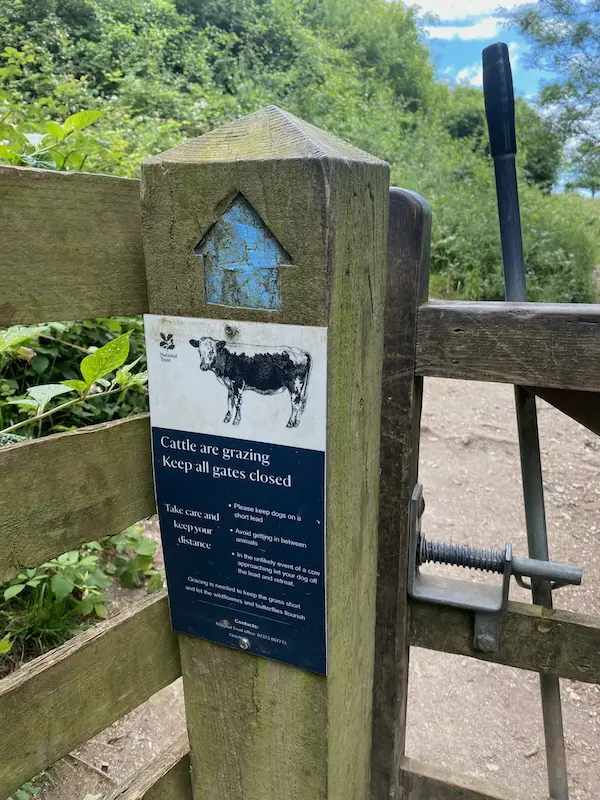
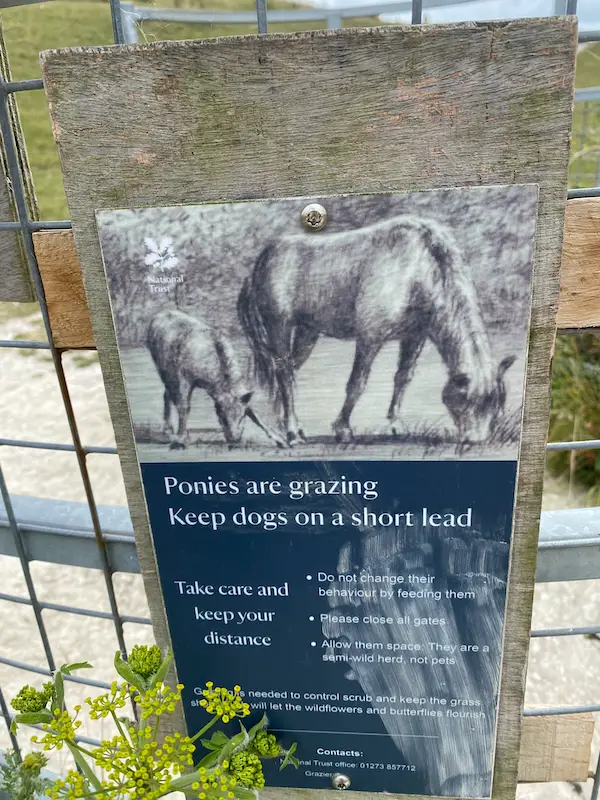
Poo Bags and Red Bins
Another dog walking surprise for me was that dog poo bags are not available in any parks. Maybe I was spoiled in California, but I could usually count on at least one stand in a neighborhood park dispensing bags if I unexpectedly found our leash roll out. Here, I often have spares stashed in coat pockets and always check the roll before heading out. What you carry is what you have – period.
While I have to be sure of bags, the ready availability of bins to ditch poo bags is incredibly convenient. Most towns or regional government contract for these to be available along trails and near any green space large enough to lure dog owners. The bins are typically red and very easy to find. It’s nice to know you’re unlikely to be stuck carrying a bag for hours.
Indoor versus Outdoor Cats in the UK
Culture shocks for pets in the UK are not just limited to dogs. Cat ownership is also viewed very differently in the UK than it is in the US. The primary difference is that more cat owners here expect their cat to live at least partially outdoors. International Cat Care estimates only 10% of cats in the UK live fully indoors. When we moved to the UK in 2014, our landlord was surprised we were willing to live with our two cats in a house that did not have a cat flap (cat door) access to the garden.
In the US, I found indoor cats to be the norm and what most vets recommend. Here in the UK, there is a lot more debate on the subject. Even the RSPCA warns of stress, inactivity and obesity for indoor cats. Indoor cats are seen as lacking enrichment they’d find outdoors. This is less often the view in larger cities where hazards are more common, but you’ll encounter cats sunning themselves outdoors even in London.
I’ve taken a middle ground position on this debate, thanks to our enclosed garden. By “enclosed” I mean that a privacy fence goes entirely around the garden and attaches directly to the house with no gates in the fence. Enclosed gardens are not difficult to find if you are able to rent a house rather than a flat. Connected houses are common in the UK, so it’s normal to have no side gates on the back garden. This makes the garden harder to escape if your cat isn’t an adventurous climber. I’ve found this to work well for our cautious cat, who enjoys lying under the bushes for a few hours during the day while I work.
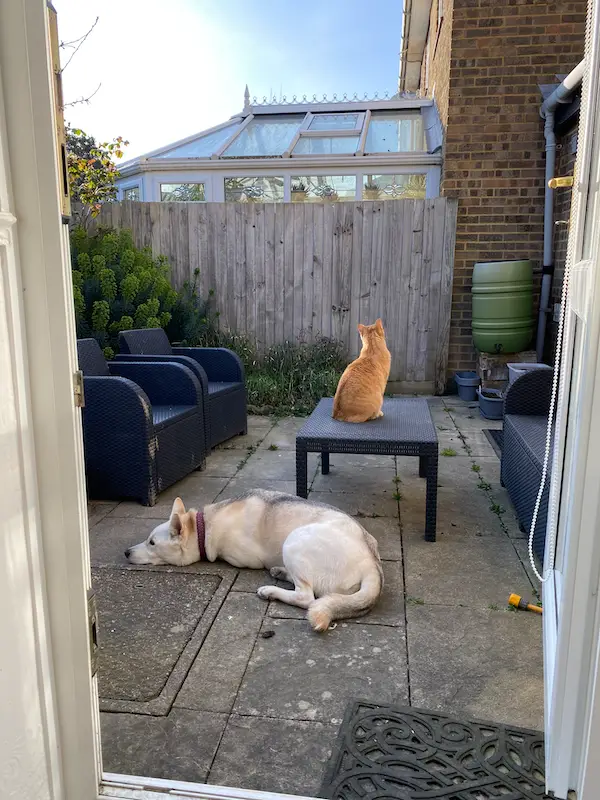

Overcoming Pet Culture Shocks
The differences in pet ownership culture in the UK can feel very strange after life in the US. Give it some time and keep an open mind to find the right fit for you and your pets. Culture shocks for pets in the UK will become less strange the longer you live in your new environment. You may even find some of the differences benefit you as well. Being able to take Loki so many places has started lots of conversations with people curious about our dog. He’s now a popular fixture in our neighborhood and has helped us form some new human and canine friendships.
For more on how to bring your pet from the US to the UK, check out these posts:


8 Mistakes to Avoid When Moving Pets to the UK
Save this post on Pinterest!
